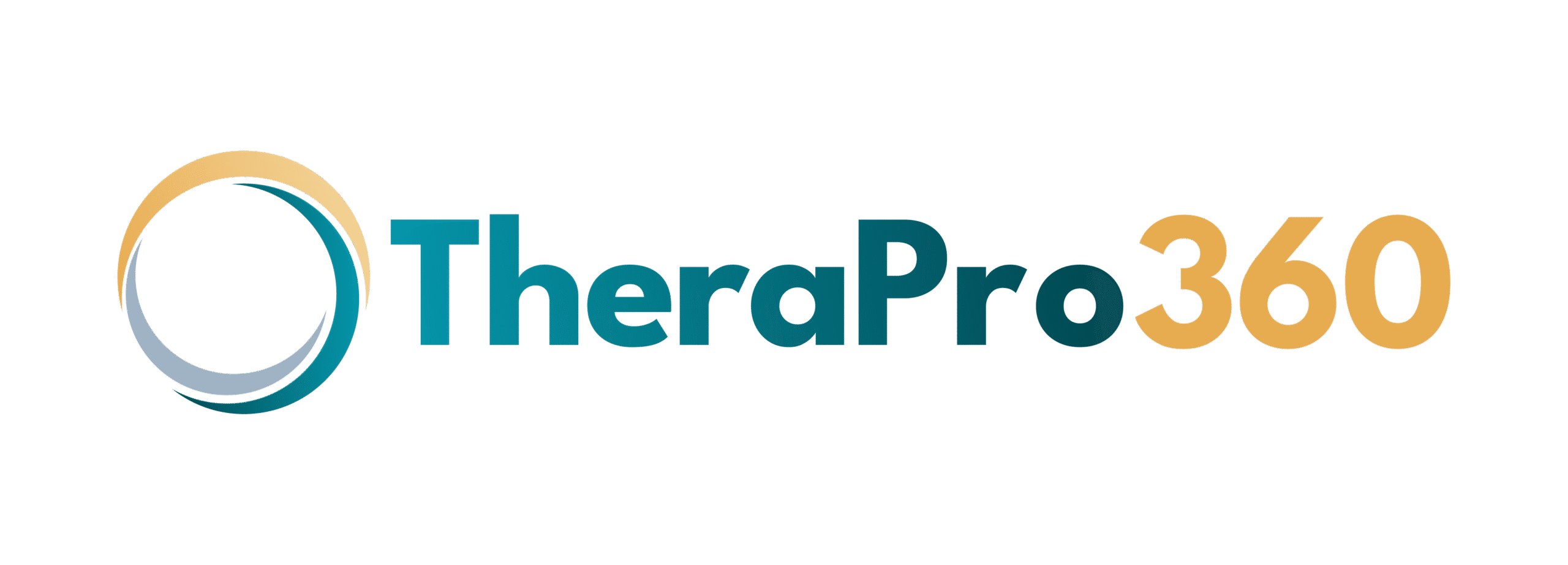
Blog
A Beginner’s Guide to Managing Payments in Your Speech Therapy Practice
Expert web designers ensure the site and software is easy to use.A Beginner’s Guide to Managing Payments in Your Speech Therapy Practice
As a speech therapy practice owner or manager, your primary focus is helping patients. However, the financial health of your practice is what makes that mission possible. Managing payments—from creating insurance claims to collecting from patients—can feel like a complex and overwhelming task, especially if you’re new to the business side of healthcare. Inefficient payment processes can lead to cash flow problems, frustrated clients, and administrative burnout, pulling you away from the clinical work you love.
Many new practice owners start by managing payments manually, using spreadsheets and paper invoices. While this may seem manageable at first, it quickly becomes a source of errors, delays, and lost revenue. The good news is that there are powerful tools designed to simplify this entire process, making it more accurate, efficient, and transparent for both you and your patients.
This guide is designed for beginners. We will walk you through the fundamentals of speech therapy billing and payments, step by step. You’ll learn why effective payment management is crucial, how technology like practice management software for speech therapists can transform your workflow, and what actions you can take today to build a healthier financial future for your practice.
Why Effective Payment Management Matters for Speech Therapy Practices
Effective payment management is the backbone of a successful speech therapy practice. It’s about more than just getting paid; it’s about creating a stable financial foundation that allows your practice to operate smoothly, grow sustainably, and provide uninterrupted, high-quality care to your community. When payment processes are clunky and inefficient, the negative effects ripple through every part of your organization.
The connection between smooth billing and healthy cash flow
Cash flow is the movement of money into and out of your practice. You have regular expenses—rent, salaries, supplies—that need to be paid on time. To cover these, you need a steady and predictable flow of income. A smooth, efficient billing and payment process ensures that you get paid for your services as quickly as possible.
When billing is delayed or claims are denied, your cash flow suffers. You’ve already provided the therapy and paid your staff, but the money you earned is tied up with insurance companies or in unpaid patient balances. This creates a stressful cycle of waiting and chasing payments, which can make it difficult to run your business effectively. A streamlined payment system shortens this cycle, providing the predictable income you need to operate with confidence.
Common payment challenges in speech therapy practices
Speech therapy practices face a unique set of payment challenges that can make billing particularly tricky for beginners.
- Complex Insurance Rules: Every insurance plan has different rules for what it covers, how much it pays, and what documentation is required. Keeping track of these variations is a major hurdle.
- Prior Authorizations: Many insurers require you to get approval before providing services, especially for ongoing therapy. Failing to do so often results in a non-payment.
- Coding Intricacies: Using the correct CPT (procedure) and ICD-10 (diagnosis) codes is essential for getting claims paid. A simple mistake can lead to an automatic denial.
- Patient Responsibility: It’s often difficult to explain copays, deductibles, and coinsurance to patients. Collecting these balances after the fact can be awkward and time-consuming.
- Tracking Everything: Manually keeping track of submitted claims, payments received, and outstanding balances for dozens or hundreds of patients is incredibly prone to error.
How poor payment processes impact patient satisfaction and revenue
Your payment process is a key part of the patient experience. When billing is confusing, inaccurate, or unprofessional, it erodes trust and can lead to patient dissatisfaction. Families are often under stress, and unexpected bills or disputes over coverage only add to their burden. A patient who has a negative billing experience is less likely to recommend your practice, even if they were happy with the therapy itself.
Financially, the impact is direct and severe. Poor processes lead to:
- Increased Claim Denials: Errors in manual billing result in more rejected claims, which means delayed or lost revenue.
- Higher Administrative Costs: Your staff (or you) will spend countless hours correcting errors, resubmitting claims, and following up on unpaid invoices.
- Lost Revenue: Some denied claims or unpaid patient balances are never collected and are eventually written off as bad debt, which is a direct loss to your practice.
By establishing an effective payment system from the start, you protect both your revenue and your relationship with your patients.
Understanding the Basics of Speech Therapy Billing and Invoicing
For beginners, the language of medical billing can feel like learning a new language. Let’s break down the core concepts into simple, understandable terms.
The difference between billing, claims, and invoicing
While these terms are often used interchangeably, they refer to distinct parts of the payment process.
- Billing: This is the overall process of generating charges for your services and collecting payment. It includes everything from creating claims to sending invoices to patients.
- Claims: A claim is a formal request for payment that you send to an insurance company. It’s a standardized form (like the CMS-1500) that includes detailed information about the patient, their diagnosis, and the services you provided. This is how you get paid by insurers.
- Invoicing: An invoice is a bill that you send directly to the patient. It details the services they received, how much their insurance paid (if any), and the remaining balance they are responsible for (their copay, deductible, or coinsurance).
In short: you submit a claim to the insurance company, and you send an invoice to the patient. Both are part of the overall billing process.
How insurance reimbursement works in speech therapy
The insurance reimbursement cycle is a step-by-step process. Understanding it is key to managing your payments.
- Verify Eligibility: Before the first session, you check the patient’s insurance to confirm their coverage is active and to understand their benefits for speech therapy.
- Provide Service & Document: The SLP conducts the therapy session and writes a detailed clinical note.
- Create & Submit Claim: Using information from the session, you create a claim with the correct codes and submit it electronically to the insurance company.
- Payer Adjudication: The insurance company reviews (adjudicates) the claim to make sure it follows their rules.
- Payment & EOB/ERA: The insurer either pays the claim or denies it. They send you a notification explaining their decision, called an Explanation of Benefits (EOB) or Electronic Remittance Advice (ERA). This document shows how much they paid and what portion the patient owes.
- Patient Invoicing: You invoice the patient for their remaining responsibility.
Common billing codes and documentation requirements
To get paid, your claims must include specific codes that tell the insurance company what you did.
- CPT Codes (Current Procedural Terminology): These five-digit codes describe the service you provided. Common codes in speech therapy include 92523 (for a swallowing evaluation) or 92507 (for an individual speech therapy session).
- ICD-10 Codes (International Classification of Diseases): These codes represent the patient’s diagnosis, such as F80.0 (phonological disorder) or R13.11 (dysphagia). The diagnosis code justifies the medical necessity of the treatment code.
Your documentation (clinical notes) must support the codes you bill. A good note includes subjective information (what the patient or parent reports), objective data (what you observed and measured), your assessment (your clinical judgment), and a plan (what you will do next). This SOAP note format is a standard way to prove why the therapy was necessary.
The Role of Speech Therapy Billing Software in Payment Management
Manually managing the complex process described above is incredibly difficult. This is where specialized software becomes essential. Speech therapy billing software automates and streamlines these tasks, reducing errors and saving you an enormous amount of time.
What billing software does (and why manual tracking isn’t enough)
Billing software acts as your digital command center for all financial activities. It is designed to handle the specific needs of a therapy practice. While a simple spreadsheet can track a few invoices, it can’t handle the complexities of insurance claims, coding rules, and payment posting.
Billing software automates tasks like:
- Creating properly formatted electronic claims.
- Submitting claims to thousands of different insurance companies.
- Tracking the status of every claim you submit.
- Automatically posting payments when you receive an ERA.
- Generating professional-looking patient invoices.
Manual tracking with spreadsheets is not enough because it’s reactive, not proactive. It doesn’t help you prevent errors before they happen, and it requires hours of painstaking data entry.
Key features that simplify claim submissions and payment posting
When looking at billing software, certain features are critical for simplifying your life.
- Claim Scrubbing: This is an automated check that “scrubs” your claims for common errors before they are sent to the insurer. It can catch typos, invalid codes, or missing information, dramatically reducing your denial rate.
- Clearinghouse Integration: A good system has a built-in connection to a clearinghouse, which is like a post office for electronic claims. This allows you to submit claims to any insurer from one place with a single click.
- Electronic Remittance Advice (ERA) / Auto-Posting: This is a game-changer. The software can receive ERAs electronically and automatically post the insurance payments to the correct patient accounts. This feature alone can save you hours of manual data entry each week.
How software reduces errors and improves transparency
Software reduces errors by creating a standardized, guided workflow. By using templates, drop-down menus, and automated checks, it minimizes the chances of human error that are so common in manual processes. For example, instead of typing a patient’s policy number multiple times, the data is entered once and then automatically pulled into every claim.
This also improves transparency. With just a few clicks, you can see the status of any claim, view a patient’s complete billing history, or explain to a parent exactly how their insurance processed a payment. This clarity builds trust with your clients and gives you a clear view of your practice’s financial health.
Integrating billing software with your practice management system
While standalone billing software exists, the most powerful solution is a fully integrated practice management software for speech therapists. This type of system combines scheduling, clinical documentation (EMR), and billing into one seamless platform.
When your systems are integrated, data flows automatically from one area to the next. An appointment on the schedule becomes the basis for a clinical note, and that note flows directly into a billable claim. There is no re-entering of data, which eliminates redundancy and errors. This all-in-one approach is the modern standard for running an efficient and profitable therapy practice.
How Speech Therapy Invoicing Tools Improve Cash Flow
Getting paid by insurance is only half the battle. Collecting payment from patients for their portion of the bill is just as important for maintaining healthy cash flow. Modern invoicing tools, often included in practice management software, make this process easier and more effective.
Automating recurring invoices for ongoing therapy sessions
Many patients, especially those paying privately or with consistent copays, will have recurring charges. Instead of manually creating an invoice each week or month, software can automate this process. You can set up a recurring invoice that is generated and sent to the patient on a schedule you define. This ensures consistent billing without any manual effort.
Real-time payment reminders and digital payment options
One of the biggest challenges in collecting from patients is simply that they forget. Automated invoicing tools can send friendly, polite payment reminders via email or text message when an invoice is coming due or overdue.
Furthermore, these tools make it easy for patients to pay. The invoice they receive includes a link to a secure online payment portal where they can pay their bill instantly with a credit card. Offering convenient, digital payment options significantly speeds up patient payments compared to waiting for a check in the mail.
Tracking outstanding balances and managing patient statements
It’s easy to lose track of who owes what when using a manual system. Invoicing software gives you a clear, real-time dashboard of all outstanding patient balances. You can quickly see which invoices are overdue and by how much.
The software also makes it easy to generate patient statements. A statement is a summary of all activity—charges, insurance payments, and patient payments—over a period of time. This is helpful for patients who want a consolidated view of their account, and it serves as a professional tool for collecting larger or older balances.
Using invoice analytics to identify trends and payment delays
Good invoicing tools provide valuable data. You can run reports to see trends in your patient payments. For example, you might analyze:
- Average days to pay: How long does it typically take for patients to pay their invoices?
- Aging balances: What percentage of your patient balances are over 30, 60, or 90 days old?
- Payment methods: Are most patients paying online or by check?
This information helps you identify issues in your collection process. If you have a lot of aging balances, you might need to adjust your payment policy or make your reminders more frequent.
Why Practice Management Software Is Essential for Payment Accuracy
Accuracy is the foundation of successful payment management. Every error, no matter how small, can cause a claim to be denied or an invoice to be disputed. The best way to ensure accuracy is to use an integrated practice management software for speech therapists that connects all aspects of your practice.
Centralized data for scheduling, documentation, and billing
In an integrated system, you have a single source of truth for all patient information. The patient’s name, birthdate, and insurance details are entered once and stored in their central record. This same data is then used by the scheduler, the EMR for clinical notes, and the billing module for claims.
This eliminates the risk of inconsistencies. You won’t have a situation where the name on the schedule is slightly different from the name on the claim, which is a common reason for denials in disconnected systems.
Reducing redundancy between billing and clinical workflows
When billing and clinical systems are separate, you are forced to do double the work. A therapist documents a session in one system, and then a biller has to re-enter that information into another system to create a claim. This is not only inefficient but also a major source of errors.
With integrated software, the workflow is seamless.
- The appointment is created on the calendar.
- The SLP links their clinical note to that appointment.
- When the note is signed, the system automatically uses the information (like CPT codes) to generate a claim.
There is no redundant data entry, which saves time and ensures the claim perfectly matches the documented service.
Real-time reporting for better financial insights
Because all your financial and operational data is in one place, integrated software can provide powerful, real-time reports. You can instantly see the connection between your therapists’ schedules, the services they are providing, and the revenue being generated.
This allows you to ask and answer critical business questions:
- What is our average reimbursement rate from our top insurance payers?
- Which of our therapists has the highest billing productivity?
- What is our projected revenue for next month based on our current schedule?
This level of insight is impossible to achieve with separate, disconnected systems.
How integrated systems support faster claim reimbursements
Integrated systems lead to faster payments by producing “clean claims”—claims that are accurate and complete on the first submission. By verifying eligibility upfront, pulling data from a central record, scrubbing claims for errors, and linking billing directly to documentation, the software systematically eliminates the most common reasons for denials.
Clean claims are processed by insurance companies much faster than claims that contain errors. This directly shortens your revenue cycle, improves your cash flow, and reduces the administrative time spent on rework.
Steps to Set Up a Payment Management System for Your Speech Therapy Practice
Setting up a streamlined payment system is a methodical process. Following these steps will help you transition from manual chaos to automated efficiency.
Assess your current billing and invoicing workflow
Before you can improve your process, you need to understand it. Map out every step you currently take, from the moment a new patient calls to the moment their bill is paid in full. Ask yourself:
- Where are the biggest bottlenecks? (e.g., waiting for superbills)
- What tasks take the most time? (e.g., calling insurance companies)
- What are our most common errors? (e.g., coding mistakes)
This assessment will highlight your biggest pain points and create a clear business case for adopting new tools.
Choose the right speech therapy billing software
Armed with your assessment, you can now shop for software. Look for a solution designed specifically for therapy practices.
Checklist for Choosing Software:
- Is it an all-in-one practice management software for speech therapists with integrated scheduling, EMR, and billing?
- Does it offer automated eligibility verification?
- Does it have a robust claim scrubber?
- Does it support ERA auto-posting?
- Does it have patient invoicing tools with digital payment options?
- Is the vendor fully HIPAA compliant and willing to sign a Business Associate Agreement (BAA)?
Request live demos from at least two or three vendors to see the software in action.
Train your staff on digital billing and automation tools
The best software is only effective if your team knows how to use it. Invest time in training. A good software vendor will provide comprehensive onboarding and training for you and your staff. Make sure everyone understands their role in the new digital workflow, from the front desk staff verifying eligibility to the SLPs signing notes promptly to the biller managing claim submissions.
Create a payment policy that aligns with automation workflows
Your internal policies should support your new automated system. Create a clear, written payment policy that you share with all patients. It should cover:
- When copays are due (e.g., at the time of service).
- Your policy on credit card on file.
- Your process for invoicing and when payments are expected.
- The consequences of non-payment.
Aligning your policies with your software’s capabilities (like automated reminders and online payments) creates a consistent and professional experience for everyone.
Tips for Maximizing Efficiency with Practice Management Software
Once your system is up and running, use these tips to get the most out of your investment.
Automate claim submissions and payment posting
Don’t fall back into old habits. Make full use of the automation features. Set up your system to submit claims in batches with a single click. Enable ERA auto-posting to let the software do the tedious work of reconciling insurance payments. The more you automate, the more time you save.
Use reporting dashboards to monitor financial KPIs
Schedule time each week or month to review your financial Key Performance Indicators (KPIs). At a minimum, you should be monitoring:
- Claim Denial Rate: Aim for under 5%.
- Days in A/R (Accounts Receivable): This measures your average payment speed. Aim for under 40 days.
- Collection Rate: What percentage of the money you bill are you actually collecting?
- A/R Aging: Keep a close eye on balances that are over 90 days old and prioritize their collection.
Leverage alerts for denied claims and overdue invoices
Your software is designed to bring problems to your attention. Pay attention to its alerts. Set up your dashboard to prominently display new claim denials and overdue patient invoices. Addressing these issues quickly is key to preventing them from becoming bigger financial problems.
Keep your system updated for compliance and accuracy
Your software vendor will regularly release updates to keep up with changing insurance rules, new coding regulations, and security enhancements. Make sure you install these updates promptly. This ensures your system remains compliant and your billing stays accurate.
Common Mistakes to Avoid When Managing Payments
As you get started, be mindful of these common pitfalls that can undermine even a good system.
Ignoring claim rejections and unresolved balances
Out of sight, out of mind is a dangerous approach in billing. Every rejected claim or unpaid patient balance represents money you have earned but not received. Use your software’s reporting tools to create a structured process for working through these issues every week. Ignoring them is like letting money evaporate from your bank account.
Failing to follow up on patient payments promptly
The longer a patient invoice goes unpaid, the less likely you are to ever collect on it. Don’t be afraid to follow up. Use your software’s automated reminders as the first step. If that doesn’t work, a polite phone call can often resolve the issue. Consistent, professional follow-up is not rude; it’s a necessary part of running a business.
Relying on disconnected or outdated billing systems
Using multiple, disconnected systems (e.g., one for scheduling, one for notes, and another for billing) creates inefficiency and errors. If your current “system” involves a patchwork of spreadsheets and different websites, your top priority should be to consolidate onto a single, integrated platform.
Overlooking software integrations and data security
When choosing a system, ensure it is truly integrated. Be wary of vendors who claim to “integrate” but actually require clunky data exports and imports between modules. Also, never compromise on security. Your patients’ financial and health information is your responsibility. Only work with HIPAA-compliant vendors who can provide a signed BAA.
The ROI of Using Speech Therapy Billing Software
Investing in quality software is not an expense; it’s an investment that pays for itself many times over. The return on investment (ROI) comes in several forms.
Time saved through automation
Think of all the hours you and your staff spend on manual billing tasks. Software can reduce that time by 50-75%. This is time you can now spend on patient care, marketing, professional development, or simply achieving a better work-life balance.
Reduced administrative overhead and fewer billing errors
By cutting down on administrative hours and virtually eliminating rework on denied claims, you significantly lower your overhead costs. A lower denial rate means more of your revenue comes in on the first try, without the extra labor cost of fixing and resubmitting claims.
Higher patient satisfaction from transparent payment systems
When patients receive clear, professional invoices, can pay their bills online, and have confident staff who can answer their billing questions, their satisfaction with your practice increases. A smooth financial experience builds trust and loyalty, leading to better patient retention and more referrals.
Improved financial predictability and practice growth
With a streamlined payment system, your cash flow becomes stable and predictable. This financial security empowers you to make strategic decisions with confidence. You can plan to hire a new therapist, invest in new equipment, or expand your services, knowing that your practice is built on a solid financial foundation.
Conclusion: Simplify Payment Management with the Right Tools
Managing payments in a speech therapy practice doesn’t have to be a source of stress and confusion. While the world of insurance claims and patient billing can seem intimidating for beginners, the right processes and tools can bring clarity and control to your finances. By moving away from inefficient manual methods, you can build a system that is accurate, efficient, and professional.
Recap of the benefits of automation and integration
- Automation saves countless hours by handling repetitive tasks like claim submission and payment posting.
- Integration within a single practice management platform ensures accuracy by eliminating redundant data entry and creating a seamless workflow from schedule to payment.
- Modern tools improve cash flow by speeding up insurance and patient payments.
How speech therapy billing software supports sustainable growth
The ultimate benefit of a great payment system is that it allows you to focus on what matters most: your patients. By creating financial stability and freeing up your time, practice management software for speech therapists provides the foundation you need to grow your practice sustainably. It’s the engine that powers your clinical mission.
Next steps to streamline your invoicing and payment processes
- Map your current process to identify your biggest pain points.
- Research and demo integrated practice management software designed for therapy.
- Choose a system that provides end-to-end automation and strong support.
- Commit to the transition by training your team and updating your policies.
Taking control of your payment management is one of the most impactful steps you can take to ensure the long-term success and health of your practice.
FAQs About Speech Therapy Billing and Payment Management
What’s the best billing software for speech therapy practices?
The best software is an all-in-one practice management software for speech therapists that integrates scheduling, EMR, and billing. Avoid generic medical software and look for platforms designed for therapy. Key features include therapy-specific note templates, automated claim scrubbing, ERA auto-posting, and integrated patient invoicing with online payments.
How can invoicing automation improve cash flow?
Invoicing automation improves cash flow in two main ways. First, by sending invoices and reminders automatically, it ensures you are billing patients consistently and promptly. Second, by offering digital payment options (like credit card processing), it makes it faster and easier for patients to pay you, reducing the delay associated with waiting for checks.
Do I need both billing software and practice management software?
For optimal efficiency, you should have them in a single, integrated system. While you can buy standalone billing software, using it alongside a separate system for scheduling and notes creates extra work and increases the risk of errors. A true practice management software includes billing as a core, connected component, which is the most effective solution.
Is cloud-based billing software secure and HIPAA-compliant?
Yes, reputable cloud-based software vendors are fully HIPAA-compliant and offer robust security. They invest heavily in measures like data encryption, secure servers, and disaster recovery. Before purchasing, always confirm that the vendor will sign a Business Associate Agreement (BAA), which is a legal contract obligating them to protect your patient data according to HIPAA law.
Why TheraPro360?
Run your practice with simplicity with our streamlined scheduling, seamless telehealth integration, centralized patient portals, intuitive calendar management, and automated invoicing.
Get Started Today















